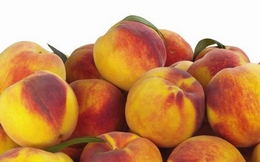 In recent years, the planted area with peaches for industries-which is used to make juices and compotes-fell as imported equivalents gained ground in the domestic market. However, the trade balance remained positive in terms of Natural peach, very popular by Brazilians.
In recent years, the planted area with peaches for industries-which is used to make juices and compotes-fell as imported equivalents gained ground in the domestic market. However, the trade balance remained positive in terms of Natural peach, very popular by Brazilians.Rio Grande do Sul, the country's main producing state, has had the same table peach planted area since 2009, while fruits for the industry suffered a significant setback. The state data indicates that there are 5,000 hectares of plantation for fresh and 6,700 hectares (8,200 hectares in 2008 and 35,000 in the 80s) for the processing.
At that rate, the number in relation to the area change of planted table peaches will be reversed in three years, said Enio Todeschini, agronomist from the Emater RS. The state produces a total of 120,000 tons per year, more than half of the national volume.
Argentina, Chile, Spain and Greece are responsible for the farmers' recent lack of interest in investing in peaches in the country, despite the efforts of Embrapa to develop new varieties. All together, these countries sent 12,980 tons of peaches to Brazil in 2012. It may seem like a small amount, but these imports have grown threefold in the last decade: in 2011, there were only 3,000 tons of peaches, according to the Brazilian Fruit Institute (Ibraf).
The competition is in the quality, volume and prices. Argentina and Chile have an ideal weather: defined winters and low rainfalls, which reduce the incidence of fungi and the need for pesticides. That leads to a reduction in costs that compensates the freight to Brazil.
According to experts, the impact of imports is felt more strongly among producers of the fruit for processing, mainly in the region of Pelotas. "Neighbouring varieties are better because the peach pit is smaller and they have a fleshy pulp, so they perform better, plus they are more orange," said a representative of the juice industry who declined to give his name. "We used the Brazilian peach to mix it in the juice when there is fruit leftover in the market," he said.
The arrival of European and Mercosur peaches discourages table variety producers from making new investments but not to the point of giving up the business like their counterparts in Pelotas. What "saves" them, producers say, is that the imported variety is picked up before it matures so that it reaches the Brazilian market without rotting. "The fruit is visually beautiful, but it tastes bad because it was reaped before it was ripe", Conte said.
In Sao Paulo, the country's second largest producer, area and volume remained stable, but without indicating expansion. "Investments in size and quality of the fruit increased the price of a kilo to R $ 2, but it won't rise more because of Europe," said Timo Van de Laar, producer and managing partner of the consulting firm Holantec. According to the executive, the fruit competes with that of Spain, which is harvested in September and arrives to Brazil in October, when peaches from Sao Paulo are on the shelves.
Despite the porosity and bad taste attributed to imported peaches, these fruits fill the gap in Brazilian crops, ensuring that there is a supply of peaches practically all year. However, the possibility of finding imported peaches in supermarkets this year has increased. The current crop ended 20 days before it was due to because of a lack of cold until September.





